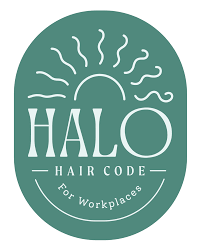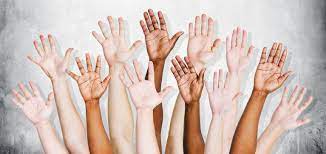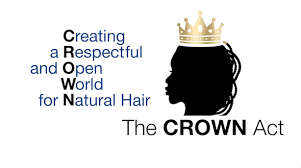DISCRIMINATION BASED ON HAIR TEXTURE
- Gege The Afro Curly Hair Coach
- Jan 13, 2023
- 5 min read
When it comes to job recruitment, it is no longer news that natural hairstyles put people of colour at a disadvantage for getting interviewed and subsequently hired. This is a truth that many people of colour still grapple with, even in today’s modern world.
According to a recent study published in the Social Psychological and Personality Science journal, “black women with natural hairstyles were perceived to be less professional, less competent, and less likely to be recommended for a job interview than black women with straightened hairstyles and white women with either curly or straight hairstyles.”
According to the same study, this trend is more common in the financial services and management consulting industries as well as other industries with strong dress codes.
The truth is; standards of professionalism in many corporate settings have been fashioned around certain unspoken norms that do not include women and people of colour.
Children experience it too
Unfortunately, people of colour do not have to wait until they are adults before they begin to experience discrimination based on their hair texture. We have children as young as five being called out in their schools for the natural afro hairstyle they choose to wear. They are told that their hairstyles break school policies, and these ins ban students from wearing braids, locs, and twists.
Hair-based discrimination can be official; like when a school handbook states that students can’t wear braids. It can also be unofficial; like when a teacher tells a student of colour their natural hair is too distracting.
Whichever way the message is delivered, the message remains that the culture and identity of a person of colour are not appropriate or accepted.
Enter the Halo Code and the CROWN Act
Since there were no legal protections against hair discrimination in the past, people of colour either conformed to Eurocentric beauty and professionalism standards, or faced whatever consequences that came with wearing their textured hair.
Thank goodness for the recent implementation of the Halo Code and The CROWN Act. Not that these laws have fully solved the problem of hair discrimination, because let’s face it; hair discrimination is deeply entrenched in western culture.
However, these laws protecting afro-textured hair are a step in the right direction. Properly implemented, they have the potential to change the course of the black hair movement.
What is the Halo code?
The Halo code is the UK’s first-ever black hair code for schools and workplaces, and is named for the work of the Halo Collective. Founded by 30 young black activists from The Advocacy Academy, the Halo Collective is a social justice youth organising movement committed to creating a more equal, just and fairer society. The Halo Code is a set of clear, simple instructions for UK workplaces and schools to help end hair discrimination. Employers and schools who sign up for the Halo Code ensure that black employees and students don’t face judgments or experience barriers because of their Afro-textured hair.
The first employer to adopt the Halo Code was Unilever UK, the parent company of Dove. The company signed the code in 2020 and pledged to protect workers with dreadlocks and afros against bias. HR Vice-President of Unilever UK & Ireland, Richard Sharp, is of the belief that the code is imperative in the fight for equality.
Since Unilever UK, other prominent companies, including P&G, M&S, New Look, Avon, Estee Lauder, The Cooperative Bank, Bates Well, Acevo, Wilko, Paul Hamlyn Foundation, Madad, National Children’s Bureau and Intent Health (amongst many others) have adopted the code.
What is the CROWN Act?
People of colour in the US often have difficulty securing employment or moving up the ladder in certain industries when they chose to wear their natural hair. As these difficulties impact an individual’s professional growth, the financial freedom of their families are also negatively affected.
The CROWN Act campaign hopes to change that. Standing for “Creating a Respectful and Open World for Natural Hair,” the CROWN Act is a law that bans hair discrimination based on race, such as the denial of educational and employment opportunities because of protective hairstyles or hair texture.
The CROWN Act is now law in 14 US states. California, New York, Washington, Maryland, Virginia, Colorado, New Jersey, Connecticut, New Mexico, Delaware, Nevada, and Nebraska now prosecute schools and employers who discriminate against black people because of their natural hair texture.
Beyond the states that have signed on, 17 other states have completed the pre-filing or filing steps that could eventually lead to official legislation.
Discrimination within the community
There is another form of discrimination based on hair texture that a certain segment of the black community faces, and this, in our opinion, is the harshest. This kind of discrimination is called texturism, and it is faced by those with coarser and more Afro-textured hair. Texturism thrives off the premise that hair textures closer to ‘Caucasian‘ on the spectrum are more acceptable.

Most of us are familiar with the hair type system and won’t think twice before categorising our hair as 4a or 4b or 4c. It would interest you to know, however, that the original hair type system was developed in the early 1900s by Eugen Fischer, a Nazi German scientist and ardent eugenicist. Fischer used this system on the mixed-race population in present-day Namibia to rate blackness based on hair texture.
This is contrary to the thought that Andre Walker, Oprah Winfrey’s celebrity hairstylist was the first person to establish the typing system. Walker simply popularised and built on the hair typing system. Based on Walker’s method, hair type can be divided into distinct categories based on texture: straight hair is 1, wavy hair is 2, looser curls is 3, and the coarsest and most tightly curled hair type is labelled 4.
4c hair is considered to be the kinkiest and most tightly coiled hair texture. This is the hair texture that experiences the most discrimination.
Anytime you hear, “Your hair is so nappy!” “What are we going to do with that hair of yours?” or “your hair is so hard to tame,”, what you hear is texturism speaking. Texturism is the belief that some natural hair types are more desirable or beautiful. This is an ongoing issue within the black community.

If there is an unspoken hair hierarchy, thick, kinky coils are definitely at the bottom. Unfortunately, while white supremacy may be the root of the problem, people of colour often hurt each other with their internalised hair trauma, hence the existence of texturism.
We need to do better
While some hairdressers are happy to work with well-defined or loose curls, they are not quite happy to extend the same grace to 4c hair. Some people with 4c hair have heard it all when they go to the hairdresser’s.
Some are told that their hair should be straightened before appointments.
Some are charged more money than others.
A stylist who is supposed to take good care of your 4c hair calls it “tough and difficult“
Unfortunately, texturism damages emotions, particularly for little girls with tighter curls. We all need to do better. As hairstylists, we need to do better. As people of colour, we need to treat each other more kindly, especially when other people’s features and life experiences do not mirror ours.
We are slowly winning the race against racism, and if the Halo Code and the CROWN Act can be put in place to make us feel more at home in the world and in our skins, we owe it to each other to throw texturism out the door.
Natural hair is a beautiful representation of the black person and accepting our hair as it grows allows us to change beauty standards all over the world.
Our textured, natural hair is dazzling! Let’s live that reality.




























